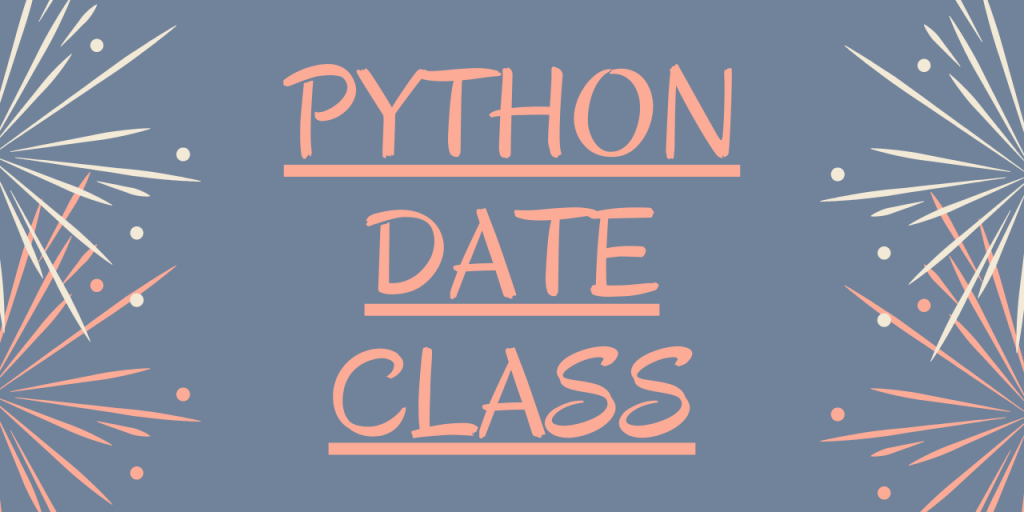Hey! In this article, we will be focusing on Python date class in detail. So, let us get started.
What is Python datetime module?
Python datetime module offers us with various classes and functions to deal with and manipulate the data values in terms of date and time values.
We need to import the datetime module in order to access the different classes and methods contained in it.
Here, you can use the below snippet of code to import the date class and create a date object through user-defined parameters–
from datetime import date
dte = date(2020,12,27)
print("Date: ", dte)
Output
Date: 2020-12-27
Now, let us understand the date class of Python datetime module in the upcoming section.
Implementing methods of date class
Python date class contains various methods to work with date format of the data values.
By using the functions of the date class, we can easily manipulate and frame the data values into the standard date format YYYY-MM-DD.
Let us now have a look at some of the important functions framed by the date class function in detail.
1. date.today() function
The date.today() function fetches the current date from the system and represents the same.
Syntax:
date.today()
Example:
from datetime import date
dte = date.today()
print("Date: ", dte)
Output:
Date: 2020-07-25
2. date.year() function
We can access and fetch the year from the date expression using year function. The year function extracts and represents the year value from the provided date expression.
Syntax:
date.today().year
Example:
from datetime import datetime,date
year = date.today().year
print(year)
From date.today() function, we get the current date i.e 2020-07-26. Further to which, we have extracted the year value using year() function.
Output:
2020
3. date.month() function
In order to extract and represent the month value, month function can be used.
Syntax:
date.today().month
Example:
from datetime import datetime,date
mnth = date.today().month
print(mnth)
Output:
7
4. date.day() function
The day value from a date expression can be easily extracted using day function as shown below–
Syntax:
date.day
Example:
from datetime import datetime,date
day = date.today().day
print(day)
Output: 25
5. date.replace() function
At times, a situation may arise, when we would want to alter the date portions of the date expression. This task can be achieved using replace() function.
The date.replace() function can be used to replace the below date portions–
- year
- month
- day
Syntax:
date.replace(year,day,month)
Example:
from datetime import datetime,date
dt = date.today()
print("Current date: ",dt)
res = dt.replace(year=2021,day=20)
print("Modified date: ",res)
In the above example, we have replaced the year and day values from the current date (2020-07-26).
Output:
Current date: 2020-07-26
Modified date: 2021-07-20
6. date.weekday() function
Using the weekday function, we can fetch the weekday number of the day value from the date expression.
The weekdays are provided the index as follows:
- Monday-0
- Tuesday-1
- Wednesday-2
- Thursday-3
- Friday-4
- Saturday-5
- Sunday-6
Example:
from datetime import datetime,date
date = date.today().weekday()
print("Weekday: ",date)
In the above example, we have calculated the weekday number for the current date: 2020-07-26.
Output:
6
7. date.strftime() function
The date.strftime() function enables us to extract the date portions of the date expressions and represent the values as a String.
To understand the variants of strftime() function, do visit Python strftime() function.
Syntax:
date.strftime("%Y-%m-%d")
Example:
from datetime import datetime,date
date = date.today()
year = date.strftime("%Y")
print("Current Year:", year)
str_date = date.strftime("%Y-%m-%d")
print("Date value:",str_date)
Output:
Current Year: 2020
Date value: 2020-07-26
Conclusion
By this, we have come to the end of this topic. Feel free to comment below in case you come across any doubt.
Till then, Happy Learning!!
